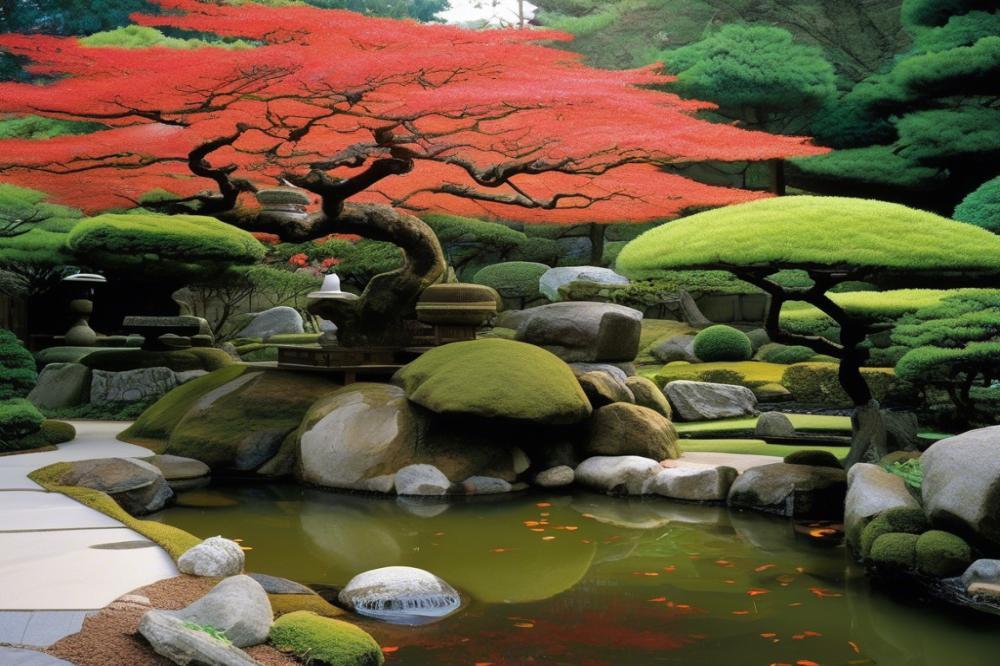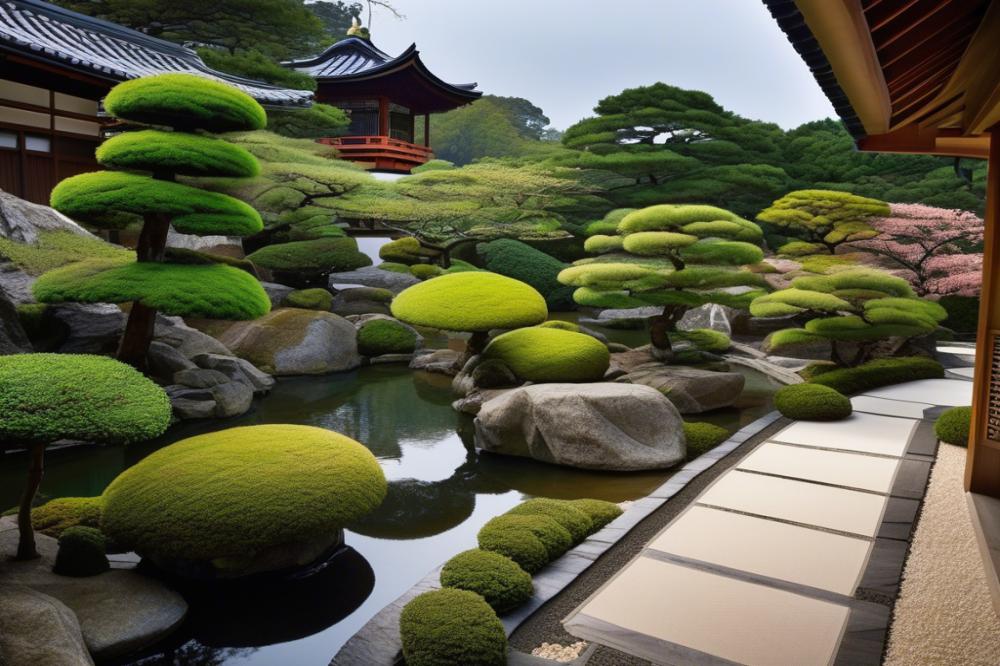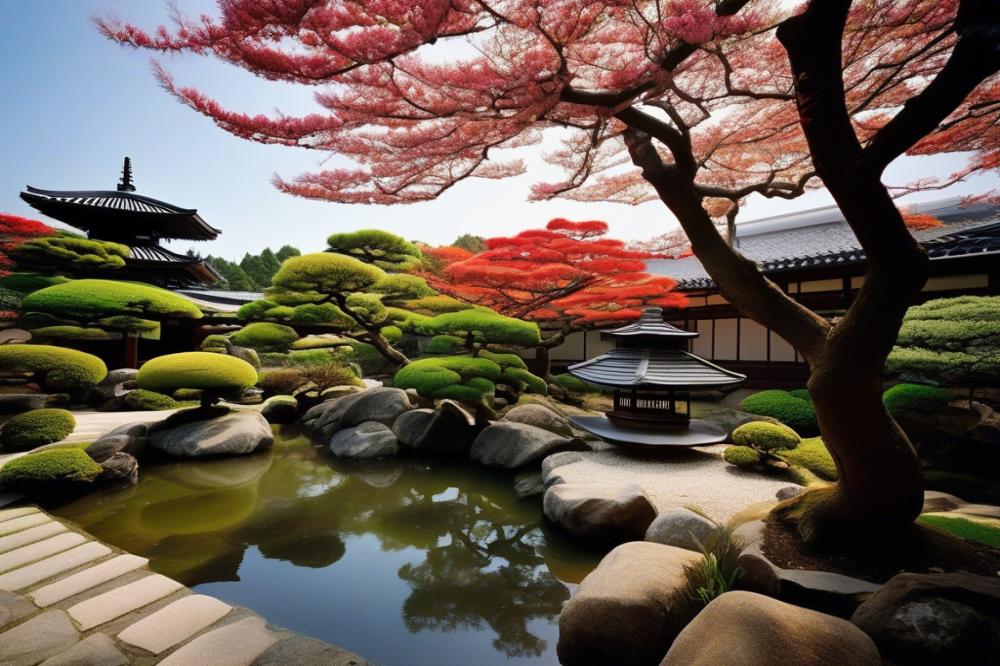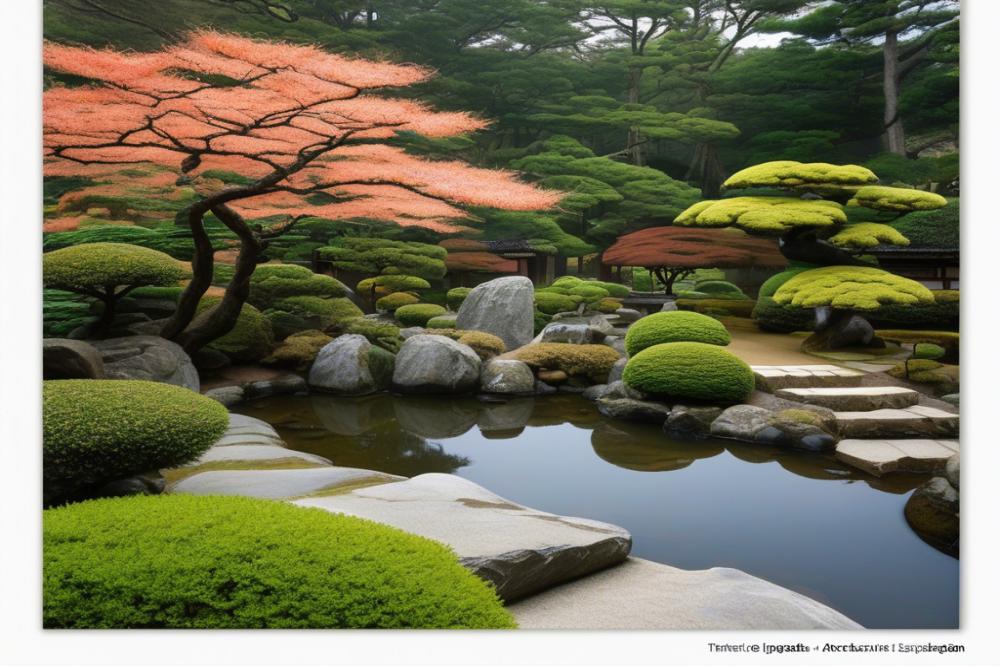The Art of pruning trees in a Japanese garden
Japanese gardens are not just beautiful spaces; they are a form of art. Each element within these landscapes holds deep cultural significance. Carefully designed layouts, subtle color gradients, and the interplay of natural materials represent a harmony that many admire. In such gardens, the beauty of nature takes center stage, offering a peaceful retreat from the hustle of modern life.
pruning trees emerges as a crucial aspect of maintaining this serene environment. This practice serves dual purposes: enhancing visual appeal and promoting tree health. Seasonal pruning encourages robust growth while ensuring that each tree contributes beautifully to the garden’s overall design. Skilled gardeners employ traditional techniques passed down through generations. Such practices emphasize aesthetic shaping, allowing plants to flourish harmoniously with their surroundings.
Furthermore, the connection between pruning and landscape artistry cannot be overlooked. When professionals prune trees, they accomplish more than mere maintenance. Each cut transforms the overall ambiance of the space, guiding the eye through meticulously curated points of interest. Bonsai practices illustrate this concept perfectly. Cultivating these miniature trees requires precision, patience, and a deep understanding of horticulture, as even the smallest adjustments can yield surprising results.
In conclusion, the art of pruning is integral to the preservation of Japanese gardens. It enhances both form and function, ensuring that each tree remains healthy while contributing to the mesmerizing beauty of the landscape. As gardeners engage with nature through their tools, they create living art that speaks to the soul and mind of anyone who visits.
Pruning Trees


Pruning trees in a Japanese garden serves both aesthetic and practical purposes. It involves selectively removing branches to promote tree health and enhance visual appeal. garden design in this context is about creating harmony between nature and human-made structures.
Techniques and Tools Used in horticulture
Various techniques are employed in horticulture to achieve effective results. For instance, seasonal pruning is vital. This allows trees to grow back stronger after their dormant periods. Tools such as hand pruners, loppers, and saws are commonly utilized to shape trees appropriately. Traditional techniques have been passed down through generations, ensuring the preservation of cultural significance in Japanese landscapes.
Impact on Tree Health and Growth
A well-executed trimming can greatly affect a tree’s vitality. Removing dead or crowded limbs promotes better air circulation and sunlight penetration. Such practices contribute to improved overall tree health. Furthermore, the careful aesthetic shaping of branches can enhance the beauty of a bonsai, which is a miniature tree that reflects a larger tree’s grandeur. Proper plant maintenance leads to robust growth and a more resilient landscape.
Seasonal Pruning


Timing plays a significant role in the seasonal pruning of trees within a Japanese garden. Many gardeners prune during early spring, before new growth begins. This method encourages healthy development. Others choose late fall, after leaves have fallen, to prepare the trees for winter. Each season requires a different approach based on the tree’s life cycle and specific needs.
Utilizing traditional techniques is part of garden design. Pruning aims to maintain tree health and enhance aesthetic shaping. In bonsai cultivation, precise cuts reflect a deep understanding of horticulture. The main goal is to create beauty in every branch while supporting the tree’s natural growth. This delicate balance is important for both novice and experienced gardeners.
Seasons affect not just the health of the trees but their visual appeal as well. During spring and summer, foliage blossoms, adding vibrancy to the landscape artistry. Conversely, winter reveals the structure of the trees, which may not be as visually striking, but highlights their form. Effective plant maintenance ensures that trees remain healthy and vibrant, regardless of the season.
As the seasons change, so too should pruning techniques. It is vital to consider the unique characteristics of each tree species. The cultural significance of pruning in Japanese gardens cannot be overstated. Trees are often treated like art, where each cut contributes to their overall form. Attention to detail in seasonal pruning allows the gardener to express their vision and devotion.
Aesthetic Shaping and Design


Pruning trees plays a crucial role in achieving visual harmony within a garden design. When done thoughtfully, it enhances the overall beauty of the space. Horticulture practices often emphasize balance and proportion to create stunning landscapes. Adapting techniques from bonsai art can deeply influence how trees are shaped in traditional Japanese gardens.
Many gardeners employ specialized methods to replicate the elegant styles found in bonsai. By understanding the way branches grow and how foliage spreads, one can intertwine nature with artistry. Seasonal pruning allows for fresh growth while maintaining tree health. This approach enables a gardener to guide the form of a tree without stifling its natural essence.
Effective plant maintenance requires sensitivity to the unique qualities of each species. Observing how trees interact with their environment is essential. A skilled pruner considers each cut carefully, shaping the tree with the utmost respect for its inherent beauty. Traditional techniques are often rooted in centuries of cultural significance, reflecting the history and values of the region.
Landscape artistry thrives when the designer harmonizes elements such as water features and stone pathways with the trees’ forms. Flawless integration can transform a simple garden into a peaceful sanctuary. Careful attention to detail creates a captivating scene where both nature and human creativity coexist effortlessly.
Cultural Significance and Traditional Techniques


Tree pruning in Japanese culture carries deep historical roots. For centuries, this practice has been integral to the art of garden design. Horticulture lines the history of Japan, where plants have been shaped to blend harmoniously with nature. It’s not just about cutting branches; there is a story behind each snip.
Traditional techniques stem from generations of knowledge. These methods were passed down through families and often became secrets held closely. Each gardener learns the importance of seasonal pruning. This ensures that trees remain healthy and vibrant. Aesthetic shaping isn’t mere decoration; it’s a reflection of the gardener’s mastery over both plant and landscape.
Pruning reflects a broader philosophy in Japanese landscape artistry. It seeks to create balance and serenity within the environment. Each tree becomes a living sculpture, artfully designed to evoke tranquility. The careful trimming of branches highlights the gardener’s respect for nature’s beauty. This practice adds depth to the gardens, encouraging visitors to connect with their surroundings.
Bonsai techniques also illustrate this cultural significance. Miniature trees are pruned to symbolize larger concepts of nature. Every twist and turn represents patience and dedication. Plant maintenance, whether for bonsai or full-sized trees, requires a practiced hand and a mindful approach.
Gardening in Japan is about creating spaces where people can find peace. The dialogue between gardener and tree fosters a unique relationship. Through careful attention, trees become more than plants; they evolve into elements of the ecosystem, vital for biodiversity. Understanding this approach to tree care exemplifies the cultural depth of Japanese horticulture.
Maintaining Tree Health
Importance of Health Assessment Before and After Pruning
Assessing tree health is a crucial step in horticulture. A careful examination can reveal issues that might not be visible at first glance. Looking for signs of diseases or stress helps determine the best approach to pruning. After pruning, checking the trees again ensures that the cuts have not introduced new problems. Healthy trees thrive in well-thought-out garden design. This is especially important in environments like Japanese gardens, where the balance of nature and aesthetic beauty is key.
Common Diseases and Pests Addressed Through Effective Pruning
Many trees can fall prey to pests and diseases. Common issues include leaf spots, cankers, and infestations from insects like aphids or scale. Effective pruning can remove infected branches and improve air circulation. This encourages healthy growth and reduces the chance of disease spread. The traditional techniques used in Japanese bonsai often incorporate pest management as part of the process. By strategically shaping the tree, it’s possible to mitigate risks to tree health while enhancing landscape artistry.
Best Practices for Sustaining Tree Growth Post-Pruning
Post-pruning, maintaining tree health requires care. Watering appropriately helps trees recover from any stress. Applying mulch can retain soil moisture and minimize weeds. During seasonal pruning, remember not to overdo it. Excessive cutting can hinder growth and counteract the benefits of a well-planned trim. Monitoring tree health for a period after pruning is essential. This vigilance can help catch any issues early on, ensuring trees flourish. A balanced approach to plant maintenance fosters the cultural significance of these trees in the garden.
Final Reflections on Pruning in Japanese Gardens
Pruning trees holds a significant place in the creation and maintenance of a Japanese garden. This practice is not just about cutting branches; it shapes the overall aesthetics and health of the garden. Each snip and clip plays a crucial role in fostering the serene environment characteristic of this unique landscape. It encourages growth, balances forms, and invites tranquility.
Integrating pruning practices into garden design requires understanding the art itself. One should approach these tasks with patience and care. The manner in which a gardener interacts with nature will reflect in the overall beauty of the space. Observing the structure and growth patterns of trees becomes essential. Those details help craft a harmonious setting.
Every gardener is encouraged to embrace the art of cutting with confidence. Knowledge and experience will deepen your connection to horticulture. Observing how the trees respond to each cut can be rewarding. Not only does this shape the garden, but it also nurtures the gardener’s bond with nature. Each instance of pruning is a moment of mindfulness, a way to engage with the surroundings meaningfully.
In summary, pruning trees is more than a maintenance task; it is a vital component of creating a balanced and beautiful Japanese garden. Every gardener can find joy in learning this craft. When practiced with intention, pruning transforms a simple garden into a peaceful retreat.



